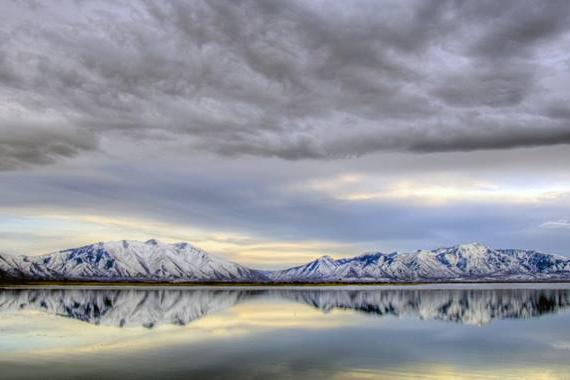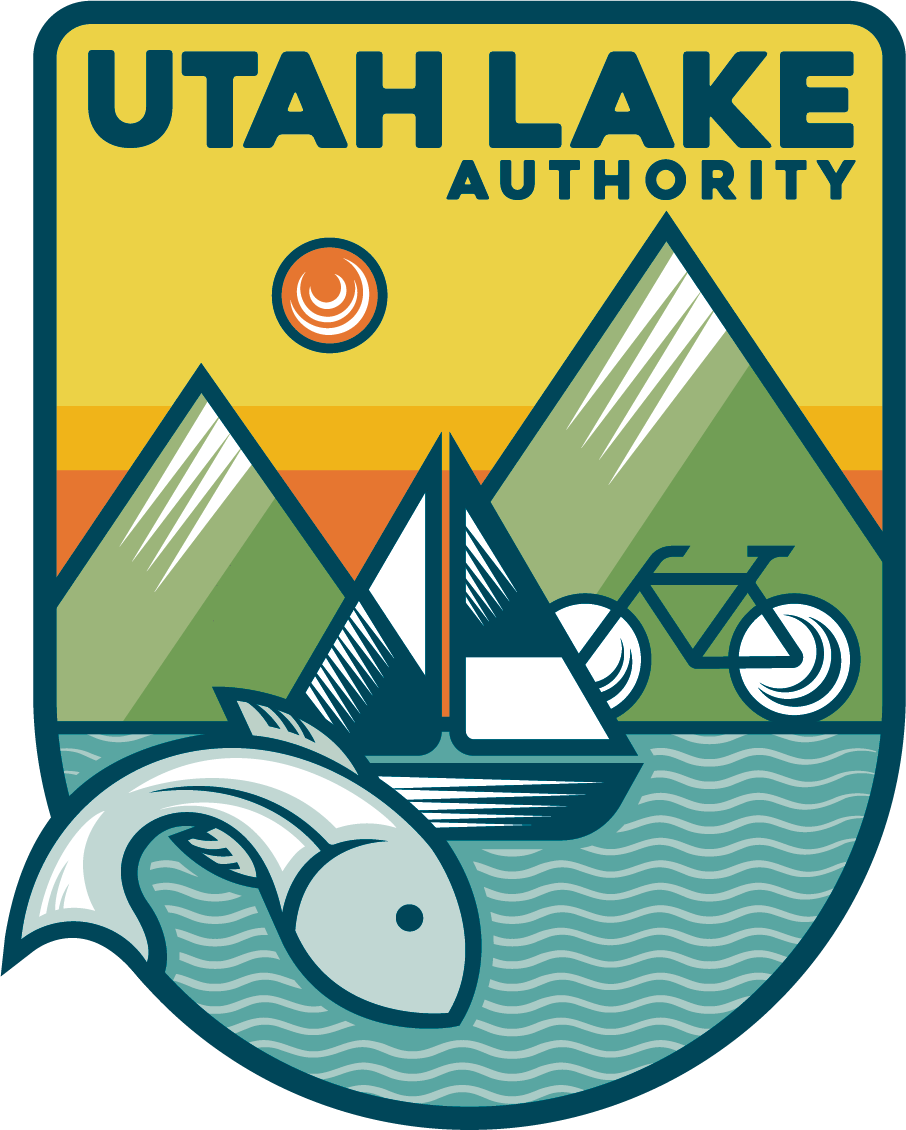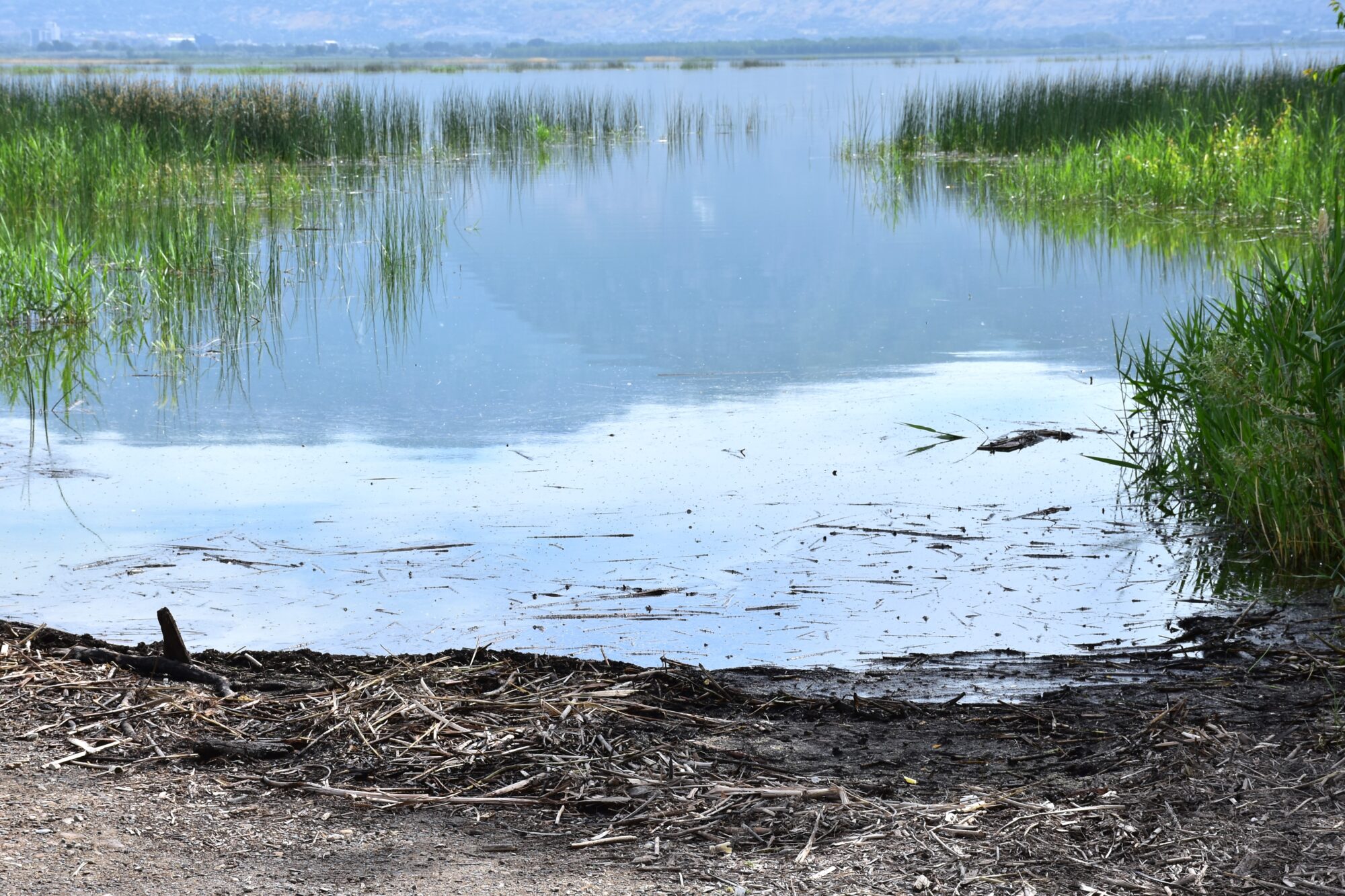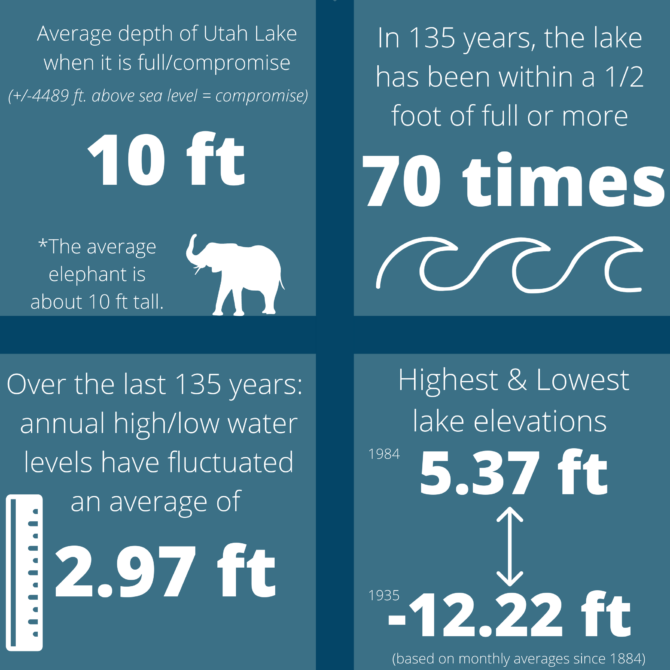Boater Advisory for Utah Lake
Due to the shallow nature of Utah Lake, we urge boaters to exercise caution while enjoying the lake’s natural beauty. Before setting sail, we recommend reaching out to your intended marina to inquire about the current water levels. This proactive step can ensure a safe and enjoyable experience on the water.

Utah Lake
To learn more about current water levels at other lakes/reservoirs in the Provo Watershed (i.e. Deer Creek, Jordanelle, etc.), follow this link: Central Utah Water Conservancy District Reservoir Data.
Water levels are updated hourly, and you can view lake levels over the past 90 days. The number given is the current water level compared to the compromise level, which is the point at which the lake is considered full. For example, if the site shows that current levels are -3.5, then the lake is 3.5 feet below full. When the lake is full, the average depth is about 9 feet. The water level of the lake is almost entirely dependent on the amount of snow that Utah receives in the winter. Low winter snowfall will cause low water levels. Due to evaporation and water going into the Jordan River, water levels will almost always be gradually decreasing during the hot months of the year.
To read more about Provo River Watershed current water supply information, check out this story map from Central Utah Water Conservancy District: https://watersupply.cuwcd.com/
*For historic water levels, take a look at the graphs below:
Utah Lake Historic Lake Levels
Monthly Avg. Lake Levels
*The charts above are intended for illustrative purposes only. The data represented is taken from the Utah Division of Water Rights website and uses the daily levels reported to create monthly averages and annual high/lows.
Compromise Elevation: The maximum legal storage elevation in Utah Lake. Compromise elevation was first established in 1885, and was recently modified in 1985 to be 4489.045 feet above mean sea level. When the lake is at this elevation, the total storage capacity is approximately 870,000 acre-feet, of which 710,000 acre-feet is active storage capacity and 160,000 acre-feet is inactive storage capacity. Whenever the level of Utah Lake is above the compromise level, the control gates are required to be fully opened. The exception to this rule occurs when fully opening the control gates causes the Jordan River to exceed a maximum flow rate that is specified in the 1985 Compromise Agreement (Civil No. 64770)
Inactive Storage Elevation: The portion of Utah Lake that is not accessible to the pumps, and therefore, cannot be diverted. The inactive storage is currently estimated to be 160,000 acre-feet (8.7 feet below compromise)
Understanding and Preparing for Flooding at Utah Lake
Flooding is a natural event that can have significant impacts on our communities and ecosystems. At Utah Lake, we’re committed to helping our community understand the risks and prepare for potential flood events.
What is Flooding? Flooding is a temporary overflow of water onto land that is normally dry. It can result from various causes such as heavy rain, rapid snowmelt, and dam failure. In Utah, floods consistently carry the highest price tag year after year, leading to loss of life, property damage, and disruption of various services.
How to Prepare for a Flood:
- Know Your Risk: Understand the types of flooding that can impact your area. Reach out to your local office of emergency management for advice.
- Get Flood Insurance: Homeowner’s insurance policies do not typically cover flooding. Consider getting flood coverage under the National Flood Insurance Program (NFIP).
- Make a Plan: Designate a place on higher ground that you can get to quickly. Plan to move to higher ground before flooding begins.
- Gather Supplies: Have supplies like food, water, and first aid kits on hand.
- Protect Important Documents: Keep important documents in a waterproof container. Create password-protected digital copies.
- Protect Your Property: Move valuables to higher levels. Declutter drains and gutters. Install check valves. Consider a sump pump with a battery.
During a Flood. If a flood event occurs, it’s important to stay informed and follow the advice of local authorities. Evacuate immediately if told to do so and never drive around barricades. Local responders use them to safely direct traffic out of flooded areas.
After a Flood Once the floodwaters have receded, return home only when authorities say it’s safe. Be aware of areas where floodwaters have receded as roads may have weakened and could collapse under the weight of a car. Remember, the specific actions to take can vary depending on the local environment and the nature of the flooding. Always consult with local authorities and experts for advice specific to your situation.
At Utah Lake, we are deeply committed to understanding and managing the factors that influence our lake’s water levels. As we observe the ebb and flow of Utah Lake’s waters, especially during periods of heavy rainfall or rapid snowmelt, we recognize the potential impact of flooding on the lake’s ecosystem, recreational activities, and nearby communities.
Understanding these dynamics is essential for the stewardship and enjoyment of Utah Lake. We invite you to deepen your understanding by exploring our blog post on the subject. Here, you’ll find a comprehensive look at the historical and environmental elements that shape our lake’s unique ecosystem. By staying informed and proactive, we can all contribute to the preservation and enjoyment of Utah Lake for generations to come. Your partnership in this journey is invaluable, and we look forward to fostering a safe and thriving environment together.


